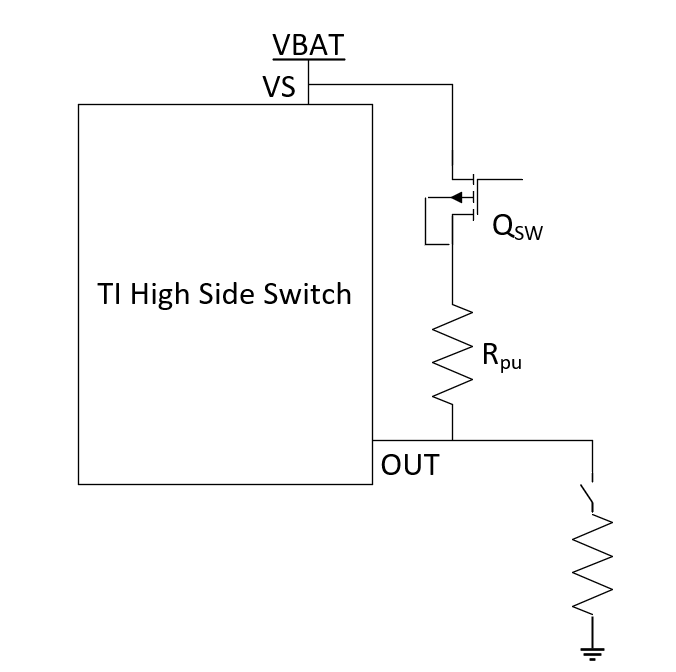SLVAEX0 October 2020 TPS1H000-Q1 , TPS1H100-Q1 , TPS1H200A-Q1 , TPS1HA08-Q1 , TPS1HB16-Q1 , TPS1HB50-Q1 , TPS2HB16-Q1 , TPS2HB50-Q1 , TPS4H000-Q1 , TPS4H160-Q1
3.2 Open Load Fault
For a high side switch to properly provide power from the supply to a load, the load needs to be connected and remain connected. In the event the load becomes disconnected, the device will detect what is known as an Open-Load fault.
For devices in the TPSxHxxxA family of smart high side switches, when the switch is enabled, the device determines an open load by first comparing the output current with a specified value IOL,ON. If the current is less than IOL,ON, then the device detects either a short-to-battery fault that occurs when the supply becomes shorted with the load or an open load fault. When either of these faults occur, the /Fault pin will be pulled low but to a process that requires toggling an external FET or switch to determine an open load or short-to-battery fault as shown in Figure 3-1. When the switch is disabled, all voltage drops across the pullup resistor with the load and pullup resistor present, resulting in VOUT being pulled low. If either the open-load or short to battery occurs, the output remains high, the fault signal remains, and the external FET or switch, QSW, comes into play. By disabling the switch, the open-load can be determined by seeing the output pulled to ground along with the fault signal disappearing.
 Figure 3-1 External Circuitry Used to Minimize
Leakage Current and Identify Open Load
Figure 3-1 External Circuitry Used to Minimize
Leakage Current and Identify Open Load